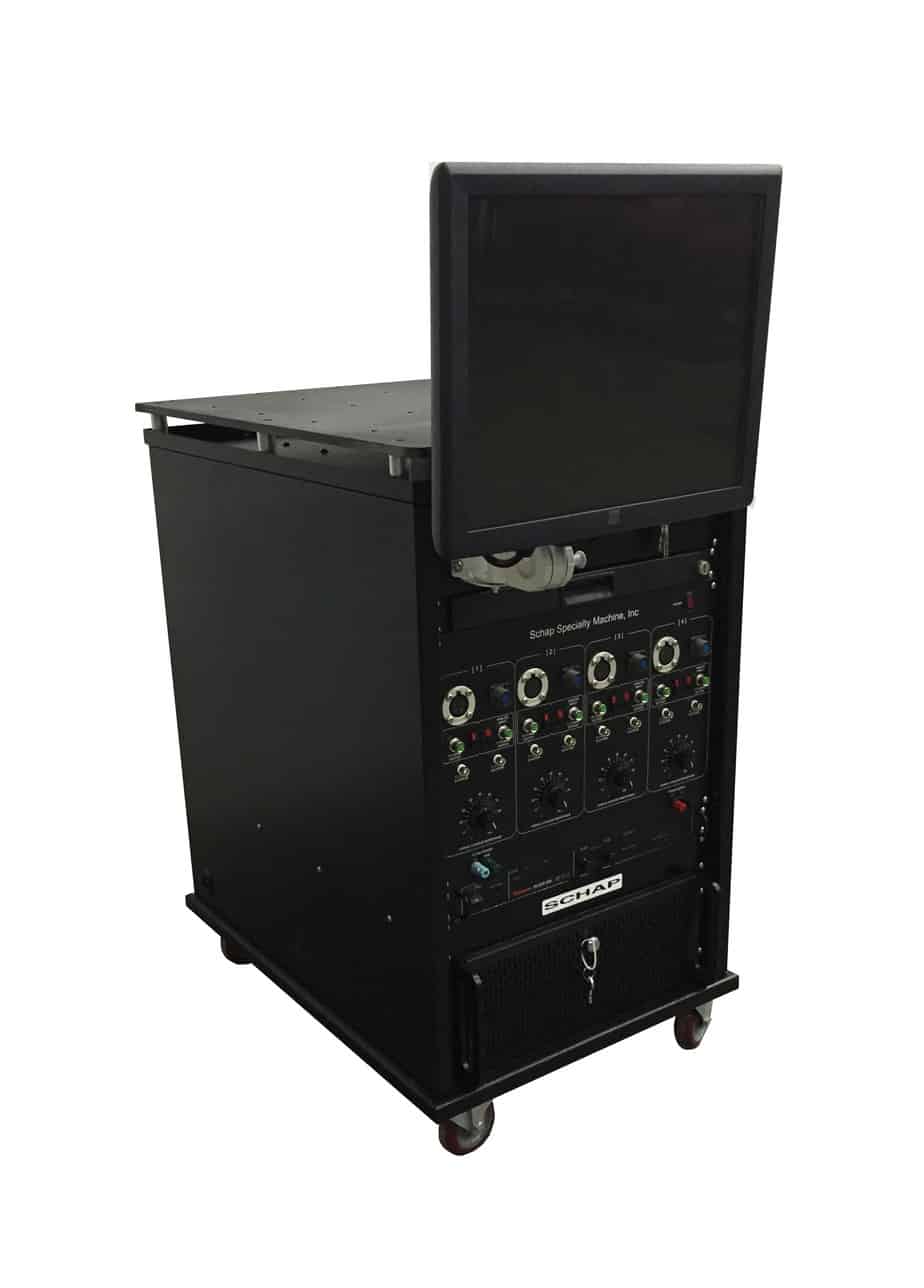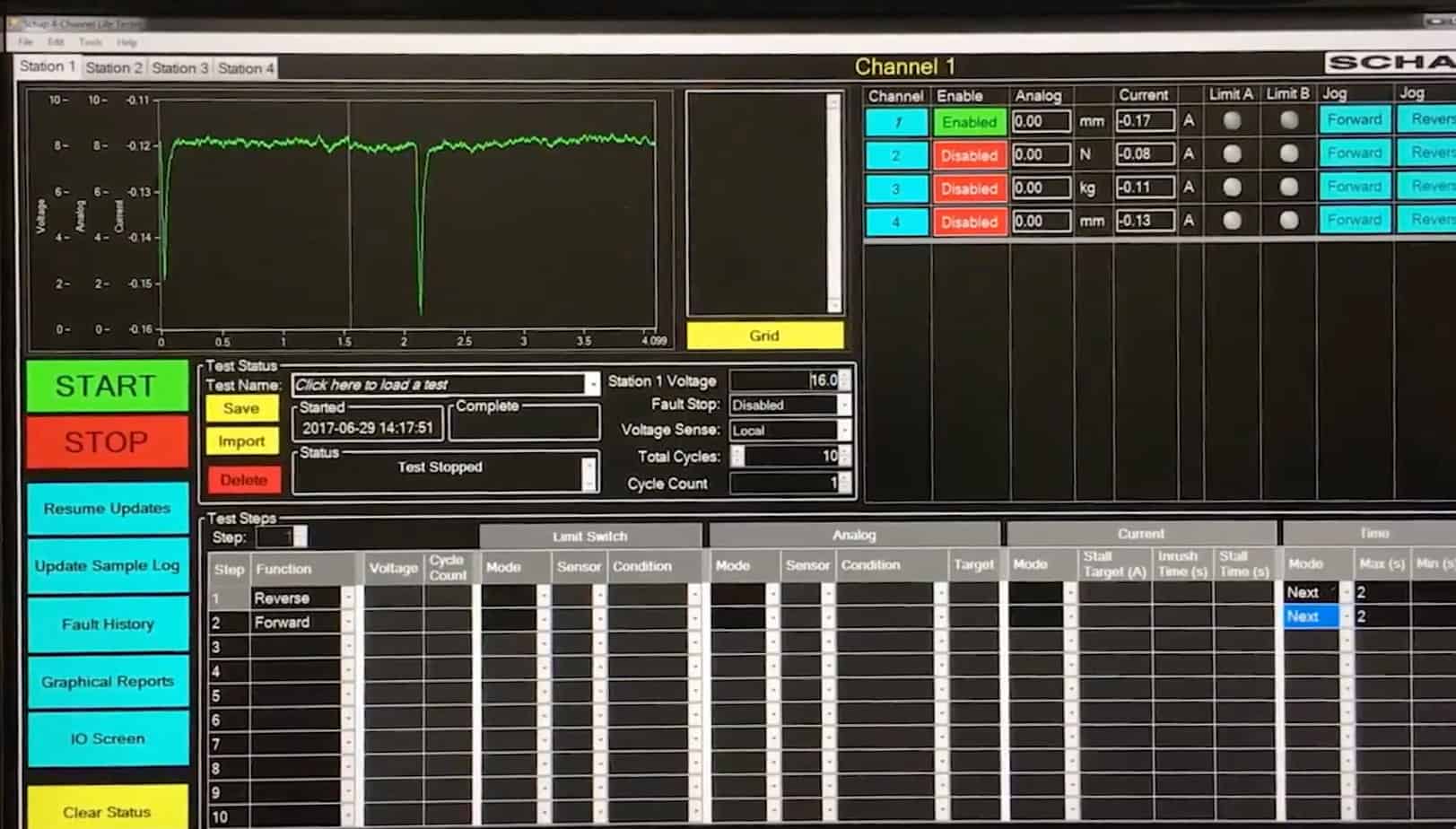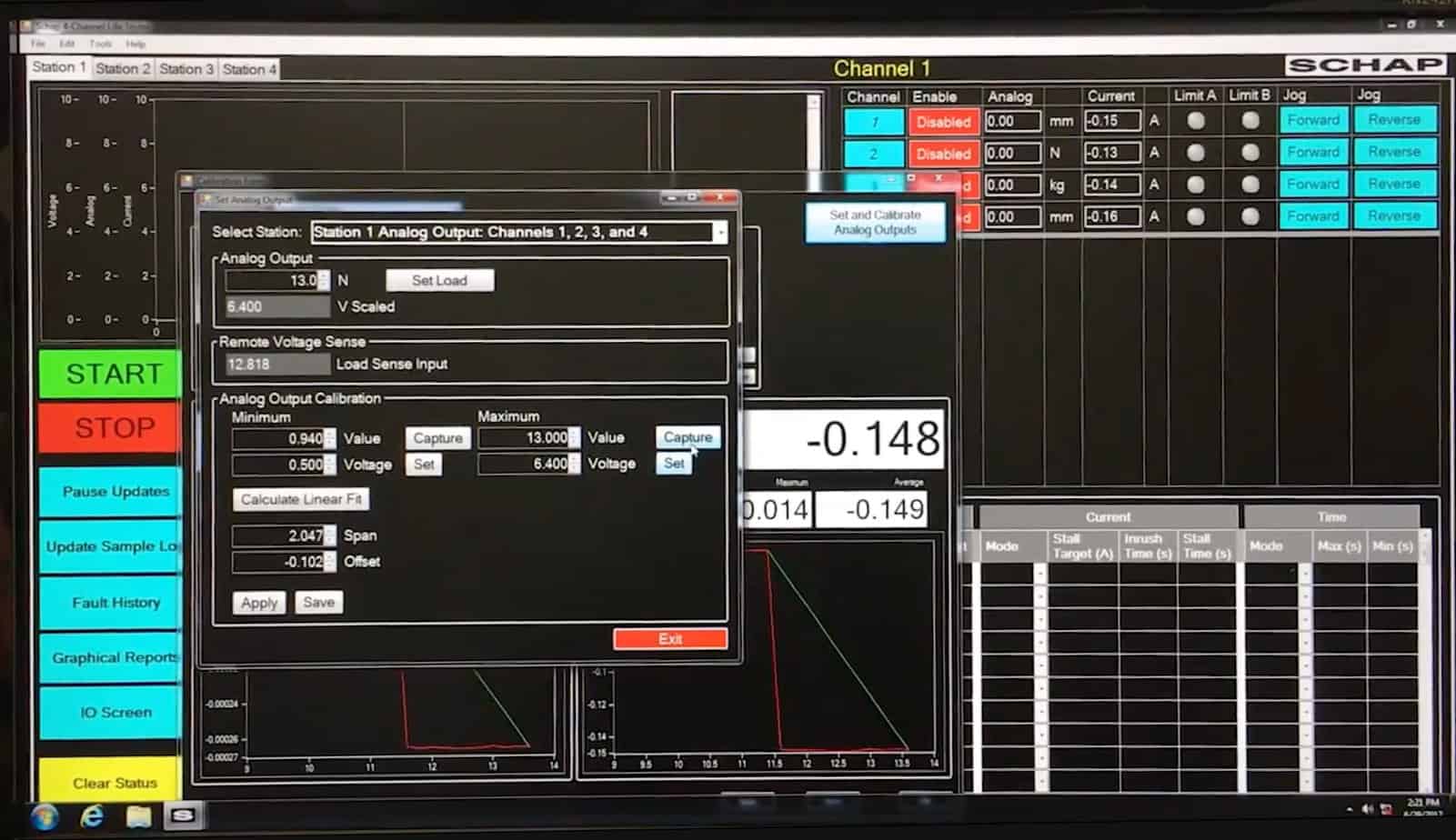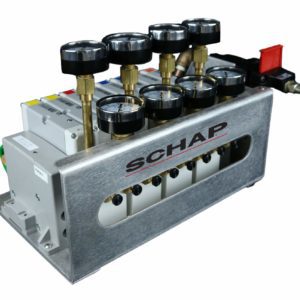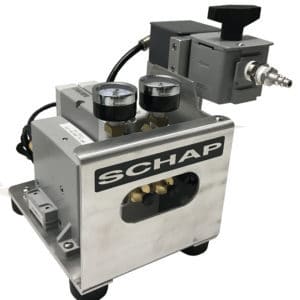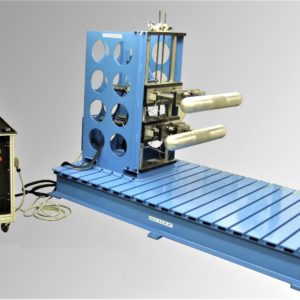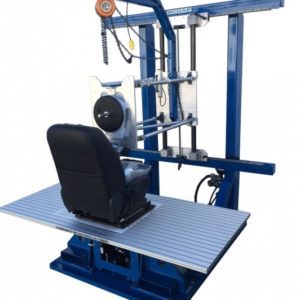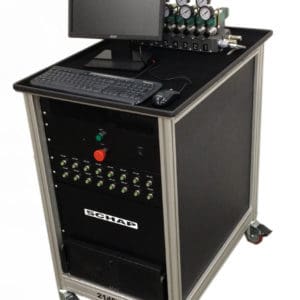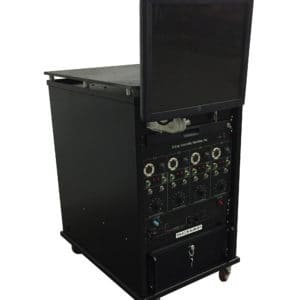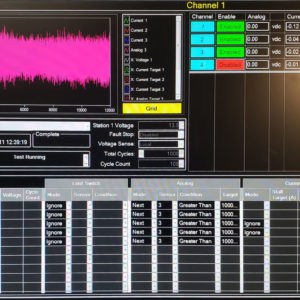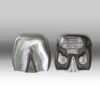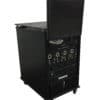PC Based 4 Station Life Tester
PC Based 4 Station Life Tester
The Schap PC Based 4 Station Life Tester is a very flexible control system intended for endurance testing of either mechanical devices with 12 VDC motors (requiring up to 70 amperes), or non-powered mechanical devices, using suitable fixturing and pneumatic actuators.
The basic form of this tester operates only D.C. motors and can accommodate up to four motors. This can take the form of a single 4-motor assembly (such as a six-way power seat track with a two-way power recliner), or four single-motor assemblies (such as a stand-alone seat recliner, or a power window regulator), or a combination of both. Also, not all of the four output channels need to be used.
Note that suitable mechanical fixturing is necessary in almost all test situations. The customer can either supply test fixtures, or we can provide them at very competitive prices. The top surface of our PC Based 4 Station Life Tester is ground steel (for attaching magnetic devices), and has integral mounting holes for attaching mechanical fixtures. The upgraded version of this tester has an additional valve pack at one end that includes four double solenoid air valves with a single pressure regulator under each station and quick disconnect fittings.
Each valve operates in tandem with a motor output so that all of the capabilities mentioned above can be simply applied to a pneumatic actuator on a test fixture instead of a motor. This means that the tester can accommodate up to four actuators. It is even possible to mix motors and pneumatic actuators!
Once the mechanical test arrangement is set up, the tester is manually programmed using a keyboard and mouse to operate any or all of the motors (or actuators) concurrently, in any directional combination, based on any of four operation modes: current, time, voltage, or limit switches. These four modes refer to what input is required to cause the tester to go to the next step in the desired sequence.
In the case of “current”, the tester is looking for motor stall current (such as the end of travel) which is set in the test sequence and can be a different value for any step in the sequence for each motor channel. In the case of “time”, the time in seconds for which a motor is turned on in a given direction is set. When the motor has moved for the predetermined time it is shut off and the next step in the sequence for that motor is executed.
For “voltage” control, an analog output device such as an LVDT, load cell, linear pot, thermometer, or other analog (+10VDC to -10VDC) output device is connected. A set voltage, as defined by the user in the test sequence, from the device moves the test to its next step. Finally, the “limit switch” mode allows the test to be operated between two limit switches with the tester looking only for an electrical contact closure of almost any type or a two-wire prox or three wire prox. The tester can be set up to run over 1000 sequential steps.
There are provisions within each step to ignore inrush current (since motors will often draw stall current upon start-up), minimum stall time (to sense a jammed mechanism), stall time (some test specifications require this feature), and motor cooling time (since any type of endurance testing usually generates excessive heat build-up). The test sequence can also include wait periods, data saving steps (for saving data to a .csv file for Excel analysis), test blocks, and nested sequence loops. The main screen includes provisions for local or remote voltage sensing (as some specifications require), which operating mode is desired (see above), voltage setting, and cycle count and reset functions. The software also allows you to assign the analog and limit sensors to any channel.
There are also fault detecting provisions and messages displayed on the main screen as well as a test sequence display designed to show the current step in the sequence (in case the tester is “in-cycle” and nothing is happening at the moment). The software in these testers includes help screens and operational instructions.
Generally, because this software appears so intuitive, most operators are able to quickly program relatively complicated tests with little or no training!
Our PC Based 4 Station Life Tester operates on 115 VAC (requiring a 15 ampere circuit), and shop air if equipped with the air valve upgrade. The tester weighs 180 pounds, and is mounted on full swivel locking casters that allow it to be rolled in any direction and through standard doorways.
The PC Based 4 Station Life Tester can be transported in the back of a pick-up truck or van. We usually maintain a stock of both new and used Life Testers for immediate delivery or customer demonstration. They are also available for short or long term rental, with a portion of the rental price applied toward eventual purchase.
| Weight | 180 lbs |
|---|---|
| Dimensions | 800 × 560 × 810 mm |


